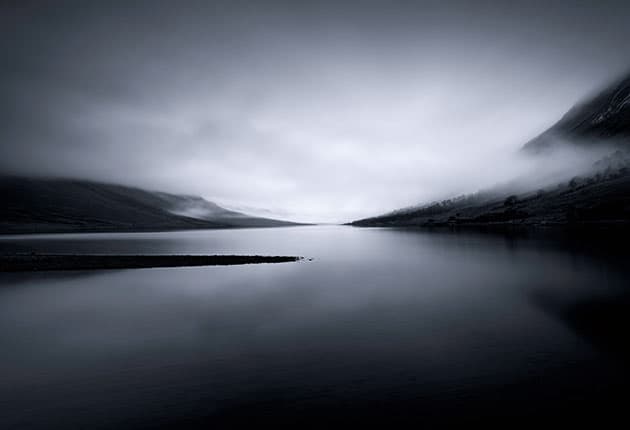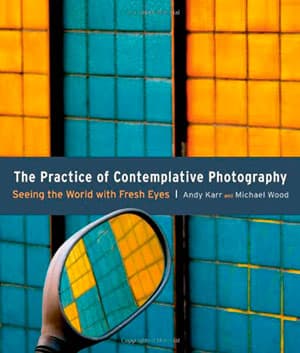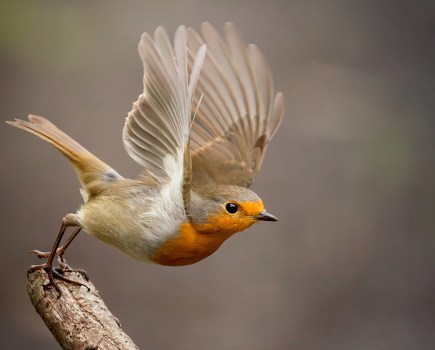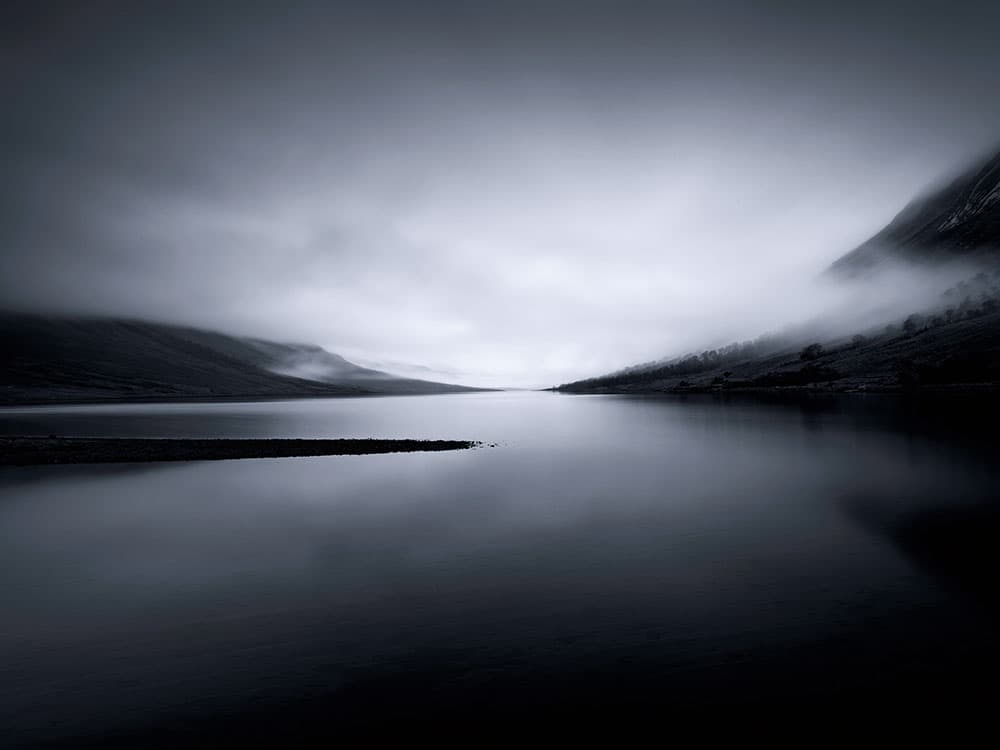
When Paul took this image of Loch Etive he was having a tough time, and there’s a sense of foreboding as the weather closes in. ‘I used a long exposure to give a sense of the calm I sought’ Credit: Paul Sanders
Gone are the days when mental health problems were assumed to beset only a troubled minority – as the latest statistics reveal, they are very common in the UK. The figures make a sobering read: according to the charity Mind, approximately one in four Britons will experience a mental health problem each year, while one in six people in England report anxiety and/or depression in any given week. Given the United Kingdom’s current population is just over 65 million, that’s a lot of suffering. While this won’t be news to a lot of readers, did you know that photography is now being seen as a valuable weapon in the battle against anxiety, depression and other mental health disorders?
Photography seems to help in several ways. First, being out with your camera taking serious photographs requires total concentration – or, to borrow the current buzzword, ‘mindfulness’. It won’t work for everyone, but being out with a tripod and camera to catch a great sunrise, for example, means you’re less likely to have the headspace to worry and obsess about other things. It doesn’t only apply to landscape photography, though. Second, photography can be a way for people to express their feelings and mental state, something which might be difficult to do in words. Art therapists have long realised this, but a growing number of photographers are appreciating the therapeutic value of image making.

Hadrian’s Wall, taken by moonlight using a seven-shot panorama. ‘When I feel very low I like shooting at night,’ says Paul Sanders. ‘This image took 10 hours in total, and the rhythm of the picture matched how my recent days had been.’ Credit: Paul Sanders
Be patient and breathe
Someone with first-hand experience of such issues is Paul Sanders, a landscape photographer, workshop leader and Fujifilm X-Photographer. ‘I have always been a photographer, mostly working in news and sport, and I ended up working as the picture editor of a national newspaper,’ he explains. ‘This seemed to be my dream job, but the accumulated stress and pressure led to a full-on nervous breakdown. I entered a downward spiral that culminated in self-harm and eventual suicide attempts in 2012.’
Paul is very candid about his struggles, as he is keen to show other sufferers how photography helped him. ‘It was only when somebody explained to me that I had more to give creatively, that I pulled back from suicide. I thought a guy like me in his forties should be invincible, and I found it hard to talk about what I was going through and my feelings.’
A breakthrough of sorts came when Paul’s counsellor at the time asked why he was taking pictures in a particular way. ‘It turns out that what I was doing was searching for calm. At the time, my head was like a badly tuned radio – I wasn’t really able to listen to what people were saying, but what they said hit home. When I was out taking pictures, concentrating purely on the creation of an image, my head started to unravel. You have to be completely “in the moment” when you take a picture. Going to a location, walking around, allowing yourself to be totally absorbed in image making, opening your eyes… The process of taking a picture is very beneficial, as it slows you down, calms you down, and your mind becomes more peaceful. When I am doing a long exposure, I have to be patient; the process is forcing me to sit and be patient and breathe. My depression still comes and goes but it’s nowhere near as bad as it was.’
As mentioned before, the therapeutic benefits of making images aren’t limited only to landscape photography. Paul recounts the story of somebody he is working with who uses photography as a way of coming to terms with childhood sexual abuse. ‘This particular person constructs sets that tell a back story to the abuse. The images are quite disturbing but very powerful. If you go beyond just using photography as a way to make money or win competitions, it can be very helpful – you start taking pictures that resonate with you and allow you to exorcise things.’

Paul reckons the emptiness of this image, taken in Şirnea, Romania, echoes the loneliness he was feeling. ‘I liked the fact the tree has support and the fence gives it direction, too’ Credit: Paul Sanders
Keeping it simple
Paul is keen to talk more about how image-making can also be a good way to communicate how you are feeling. ‘I found it easier to talk about the feelings behind an image and when I took it, rather than to describe how I was actually feeling in words. A picture can show a sense of isolation, confusion and loneliness. It doesn’t always matter if other people don’t pick up on this, however; so long as you can see your emotions in your image, it’s part of the healing process.’ For Paul, it’s the creation of an actual image that separates photography from other hobbies that benefit both body and mind, such as running, rambling or knitting. ‘Jogging, cycling, etc, allow you to work things out in your head, but they don’t allow you to fully visualise your emotions. Photography is also about being true to how you are really feeling when you took the picture. I used to get frustrated that I didn’t shoot landscapes like Joe Cornish, for example, but this is because emotionally and mentally I was in a completely different place to Joe. For me, the world looks black and white and I can express that in images. I wouldn’t necessarily phone a friend and just talk about how I am feeling, but if they ask me, I can send them an image and they “get it”.’
Paul speaks convincingly about how photography has helped him, but surely being a self-employed landscape photographer and course leader these days must also raise his stress levels, given falling payment rates, increased competition, picture thievery and other hassles? ‘It can be stressful, but three years ago I decided to dump all my commercial work, and I no longer take commissions. I stripped back life, and downsized to a small flat with a small mortgage. I have taken control of things that lead to further stress and depression. Doing what I do, my income is never going to be big, but I am not materialistic. It’s good to challenge yourself. Today I am off to Kyrgyzstan to scout workshop locations and I’m a bit nervous. But I know when I am out there taking pictures, the stress and depression often go.’
As a workshop leader, Paul also finds helping other people with their photography to be very rewarding. ‘I get inspiration from helping others. Being able to use my experiences as a photographer is very positive, and my life now has a lot of value. I am so far removed from the time I found myself at Beachy Head, thinking of throwing myself off. I give talks, and there are so many people who come up to me afterwards. They say my journey has really touched them. Either they suffer with mental health problems, or their family or friends are suffering. I am just an ordinary guy who has had this problem, so people can relate to me.’
Indeed, Paul’s interest in this topic has led him to run more general courses in mindfulness and photography. ‘It’s not about the technical side or having a fancy camera, as you can express yourself with a smartphone. Taking an extra 10 minutes a day to take in the sights or smells or sounds will improve how you approach the day.’

Paul was drawn to this produce, in a box labelled ‘ugly fruit’. ‘People are happy to give others labels and isolate them. Mental illness is very isolating.’ Credit: Paul Sanders
Small is beautiful
If wide-open landscapes helped Paul Sanders, the tiny worlds of macro photography soothed Matt Doogue, who was diagnosed with stress, depression, anxiety and acute paranoia. ‘Although going through counselling helped me, I knew that I needed something to occupy my mind,’ Matt explains. ‘I’d had a camera for a few months, but not really done anything with it; I found a great photography forum called ‘talk photography’ – aptly named, as I needed to talk and learn photography. I also began to read photography magazines, including AP, and this passion that had lay dormant started to erupt. I knew from the first day out with my camera that I felt miles better.’
So what was it about macro in particular that proved so therapeutic? ‘Looking through that lens gave me an insight into a small world, a new world. A world where all my worries and stresses went away. With each shot, everything would stand still, just me and the subject in front of me. The only noise was my breath slowing as I began to focus and concentrate, composing, waiting for the right moment to capture, and then the elation of looking back at the moment I had just captured.’
For Matt, as with Paul Sanders, any talk of being ‘cured’ is premature. ‘Recently I slid back into depression. It was not as bad as when I was first diagnosed, but I could feel it coming. For a while I didn’t pick up the camera, and when I had free time I would sit around doing nothing. I decided to reread a blog I posted a few years back about my depression, and it made me realise that photography was the key to getting back to my happy place. One morning, [I went] out with the camera and I felt miles better. Photography is now my go-to medicine.’
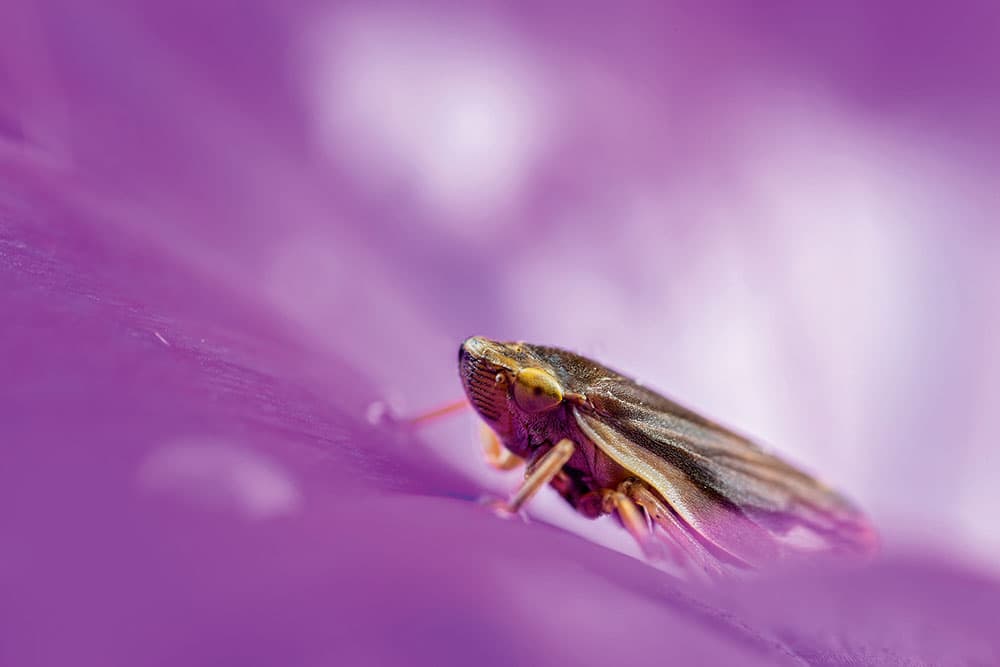
For Matt Doogue, the care and attention needed to take macro shots of insects is very therapeutic – this tiny world is way beyond the immediate problems of his day. Credit: Matt Doogue
The therapist’s view
Simone Crowley is a certified counsellor who is a passionate believer in the therapeutic benefits of photography
What are the biggest ways in which photography can help people with mental health issues, particularly those with depression and anxiety disorders?
Photography makes us stop and observe for that period of time – being present in that current moment. The encouragement to focus on the here and now is facilitating mindfulness, which can be successful in stress and anxiety reduction. Photographs can also be a way of communicating. Sometimes it is difficult to verbalise or even find the words to represent how we feel. Traditional talking therapy may not be something someone with mental health issues feels able to engage with. Photographs can be a means of showing our internal world. Through exploration in a therapy session, photographs can be used to reflect on emotional wellbeing.
Do you recommend photography to clients who have not done much before, or does it tend to work best for those who are already interested in photography anyway
I have worked with clients that have no previous interest in photography through to professional photographers. Each client will use the tool in a way that is comfortable to them. The therapeutic nature is in the meaning of the image to the individual and the feelings that are evoked while taking the picture.
Is there a risk that clients will turn photography into another stick to beat themselves with, when they start having thoughts such as ‘I’m not good enough’, ‘I never win competitions’, and so on?
Like all arts, photography is subjective, so what appeals to and connects with one person may have no inspiration or value to another. I [tend to] focus away from the end result back to the here and now, and what the image means and represents to the client. It is not about the technique or quality. I am not creative at all, but have found it a very useful tool to help me reflect on my emotions for awareness.
Do you think the benefit is about people expressing their feelings, or is it as much about the experience of being out in the fresh air with your camera and thinking about how to take a good picture?
I feel there is value in being outside and away from the hectic world. Many of us live in a fast-paced society where the phone is always with us, the emails [keep] coming through and social media [is only] a click away. To be able to spend some time just being is often a huge benefit. In that moment you can just be you. Not be an employee or employer, a partner or parent.
Being outside and taking exercise – walking to a location – releases chemicals in your brain that help towards making you feel good. This can also help with sleep, which is often an issue when individuals are having difficulties with their emotional well-being. To then be able to focus on the felt sense and create something that is representative to the moment and to express ourselves is a further benefit. In a therapeutic relationship, we would then explore this image to explore feelings, working towards adjustment. Talking about your feelings, being heard can help you understand, feel less alone and supported. Thinking about settings and technique for those who have an interest in photography, again, could be a positive [thing]. Enjoying yourself can help with stress and can also stop you from focusing on worries for a while and effect positive changes in your mood.
Any other insights?
Photography allows people to express feelings on any subject through creative work rather than with speech. I have found it particularly helpful for those who feel out of touch with their feelings or when a person is having trouble discussing or remembering painful experiences. The creative part of our brain is different from that which we use when talking. It allows us to access protected and subconscious parts of ourselves, which are often where the psychological distress is originating from. So the power of the whole process of photography should not be underestimated.
Contemplate this
Even if you don’t suffer from anxiety, depression or suicidal thoughts, photography can be a means to greater peace of mind and more natural self-expression. Henri Cartier-Bresson, for example, was very influenced by Zen Buddhist philosophy, particularly the ‘one shot, one life’ spirit expressed in Eugen Herrigel’s Zen in the Art of Archery.
A more recent book on Buddhist-inspired approaches to image making is The Practice of Contemplative Photography by Andy Karr and Michael Wood. It’s full of exercises to help you see the world in more spontaneous and ‘mindful’ ways, without worrying too much about prescribed techniques or specialist gear. AP features editor Tracy Calder also runs mindful photography courses in the New Forest – email [email protected].
For support with your mental health, visit www.mind.org.uk (England and Wales), www.samh.org.uk (Scotland) or www.inspirewellbeing.org (Northern Ireland). For information on how to find a counsellor, visit www.bacp.co.uk
If you have found photography to be helpful with mental health issues, do get in touch. Details of Paul Sanders’s workshops can be found at www.paulsanders.biz, while Matt Doogue’s Facebook page is www.facebook.com/mattsmacro. Also check out the section on photographer Daniel Regan on Wex Photo and Video’s feature ‘More than an image’ blog – bit.ly/wexmentalhealth.

